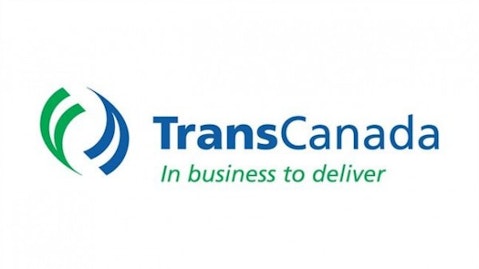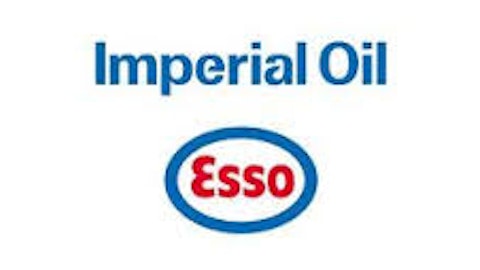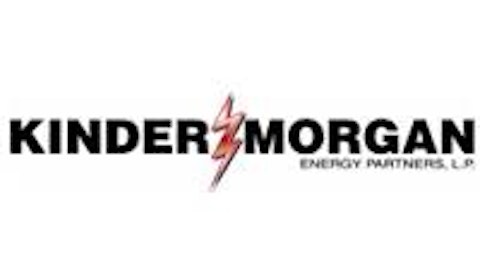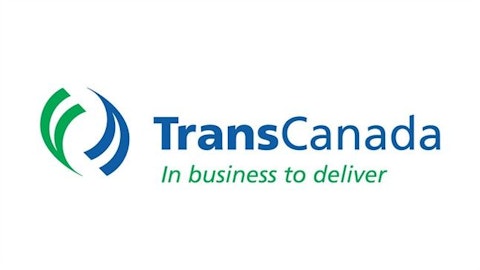“Hey! Hey! Ho! Ho! The Keystone pipeline got’s to go!”
That was a protest chant from a march outside Washington D.C. where environmentalists called on President Obama to reject TransCanada Corporation (NYSE:TRP)’s Keystone XL pipeline earlier this year.
While North America is in the midst of an energy boom, politics is preventing the construction of desperately needed pipelines to move crude from well head to market.
And that’s creating a massive opportunity for these companies.

The opportunity
Rapidly growing energy production from the Alberta oil sands and the North Dakota Bakken is overloading current pipeline capacity and surpassing the price of Canadian crude.
Several proposals have been given to alleviate this problem. Most notably is TransCanada Corporation (NYSE:TRP)’s Keystone XL pipeline. If given the okay, Keystone XL would add 830,000 b/d of new capacity and allow Canadian oil producers the ability to access Gulf coast refiners.
But the project is in political limbo with critics pushing back on environmental concerns. While TransCanada Corporation (NYSE:TRP)’s new route proposal was approved by the state of Nebraska, the project is still waiting approval from the U.S. State Department.
Other projects have been proposed to move Canadian crude west and access Asian markets such as Enbridge’s Northern Gateway and Kinder Morgan’s Trans Mountain pipelines. But these too face objections due to environmental risks.
So address this problem, energy producers are increasingly turning to rail to move product.
According to Stats Canada, 12,970 rail cars were loaded in February transporting fuel oil and crude petroleum. That’s more than double the number of carloads just two years earlier and that figure is projected to double again in 2013.

The rail advantage
Historically, shipping crude by rail was too expensive to compete with pipelines. But railroads have several emerging competitive advantages:
Infrastructure: Extensive rail infrastructure is already in place allowing producers to reach any market on the continent that has a unloading facility. That means fewer political obstacles to add transport capacity.
Convenient: Shipping heavy bitumen by rail requires less diluent which represents a big cost savings for producers. Rails also allow for higher sulfur content than pipelines.
Quality: Refiners have greater certainty regarding the quality of oil received as there’s less mixing with other batches during transport.
The top players
Canadian National Railway (USA) (NYSE:CNI) is the top play on this trend.
In 2012, Canadian National Railway (USA) (NYSE:CNI) shipped 100,000 b/d of crude oil accounting for 7%-8% of the company’s total revenues. Crude shipments are expected to triple with the company moving 300,000 b/d by the end of this year.
Canadian Pacific Railway Limited (USA) (NYSE:CP), Canada’s second largest rail carrier, is also benefiting from booming energy production.
The company expects to ship 70,000 carloads in 2013, up 30% from last year. By 2015, Canadian Pacific Railway Limited (USA) (NYSE:CP) expects crude shipments to more than double to 140,000 carloads.
The company doesn’t provide an exact precise revenue breakdown. However, industrial chemicals, which includes crude oil shipments, accounted for 23% of revenues last year up 3% from 2011.

So what’s the difference between these two companies?
Canadian National Railway (USA) (NYSE:CNI) is more leveraged to growth in the oil sands as its terminals are better positioned in northern Alberta.
In contrast, Canadian Pacific Railway Limited (USA) (NYSE:CP) is centered in the Midwest giving the company greater exposure to explosive growth in the Bakken region.
Risks
But rail carriers face several challenges to fully exploit this opportunity:
Terminals: In order to increase capacity new loading terminal need to be constructed. Smaller facilities, which can handle 2,000 to 20,000 barrels, can be built within a couple of months. However larger terminals, with the capacity to load 65,000-70,000 barrels, are the most economic but take over a year to build.
Rail cars: Capacity is also being limited by the availability of crude oil rail cars. There’s a two year waiting period from order to delivery. The backlog is close to 48,000 cars which could take several years to clear. In 2013, only 12,000 to 15,000 cars are expected to be delivered.
Spread: Shipping crude by rail is only economical if there’s a wide spread between the price of Canadian oil and traditional benchmarks. However, this gap narrowed significantly this spring.
Foolish bottom line
The crude by rail express has become one of the biggest developments in the oil patch. Until new pipeline initiatives can cut through political gridlock, it will be the railroads that benefit most from North American’s rapidly growing energy production.
The article How to Profit From Pipeline Gridlock originally appeared on Fool.com.
Robert Baillieul has no position in any stocks mentioned. The Motley Fool recommends Canadian National Railway. Robert is a member of The Motley Fool Blog Network — entries represent the personal opinion of the blogger and are not formally edited.
Copyright © 1995 – 2013 The Motley Fool, LLC. All rights reserved. The Motley Fool has a disclosure policy.




